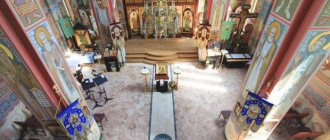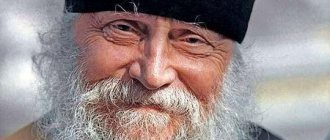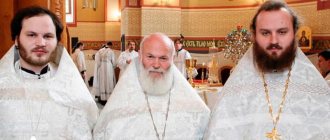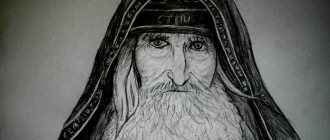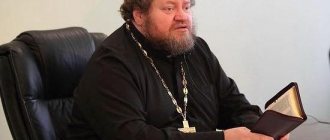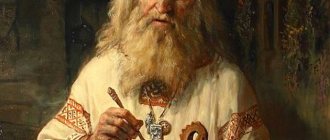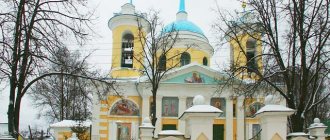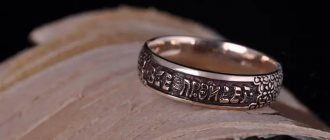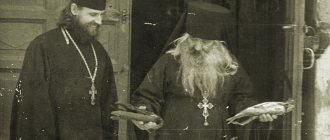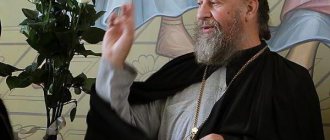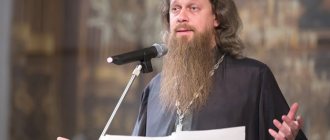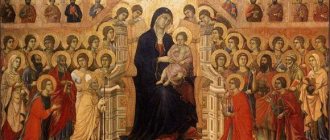"Save me, God!".
Thank you for visiting our website, before you start studying the information, please subscribe to our Orthodox community on Instagram, Lord, Save and Preserve † - https://www.instagram.com/spasi.gospodi/. The community has more than 60,000 subscribers. There are many of us like-minded people and we are growing quickly, we post prayers, sayings of saints, prayer requests, and timely post useful information about holidays and Orthodox events... Subscribe. Guardian Angel to you!
Priest Pavel Florensky is a famous Orthodox theologian, philosopher, scientist, poet, who devoted himself to the teaching of the Orthodox religion and Christian faith. His life is an example of great spiritual work created for people and in the name of all that is holy on earth.
early years
At the age of 17, Florensky entered Moscow University, where he ended up at the Faculty of Physics and Mathematics. As a student, he met the key poets of the Silver Age: Andrei Bely, Valery Bryusov, Alexander Blok, Konstantin Balmont and others. It was then that Paul became interested in theology. He began to publish in various magazines, for example, in “Scales” and “New Way”.
After graduating from university, Pavel Florensky entered the Moscow Theological Academy. Here he wrote his first serious research work, “The Pillar and Establishment of Thoughts.” For this essay, Florensky received the prestigious Makariev Prize. In 1911, he became a priest and spent the next ten years in Sergiev Posad, where he served in the church of the Red Cross. At this time, Pavel Aleksandrovich Florensky was also an editor at the academic journal “Theological Bulletin”.
Childhood
Pavel Florensky was born on January 9, 1882, within the town of Yevlakh (Azerbaijan).
He was the first child in the family. His father, Alexander Ivanovich, the son of a Russian doctor, served as a communications engineer, building bridges and roads in Transcaucasia. Mother, Olga Pavlovna (Armenian name - Salome), belonged to an ancient Armenian family that at one time settled on Georgian land. During the birth and infancy of his son, the father was engaged in the construction of one of the sections of the railway, and he had to live in freight cars, upholstered with carpets for comfort.
In the fall of 1882, the Florensky family moved to Tiflis. The spouses, despite mutual love, adhered to different religions (Olga Pavlovna was a follower of the Armenian-Gregorian religious movement). Meanwhile, in accordance with the will of the father, the first-born was baptized in the Orthodox Church (according to other sources, by an Orthodox priest at home). The name Paul was given to him in honor of the holy Apostle Paul.
The Florensky family, where six more children were raised in addition to the eldest child, was not distinguished by a strict Christian way of life and did not have the custom of regularly attending temple services. We lived a rather secluded life. Guests rarely disturbed them. Parents willingly engaged in the upbringing and education of their children, but since there were many books in the Florensky house, Pavel had every opportunity to engage in self-education.
Having entered the gymnasium, thanks to his abilities and diligence, he quickly became one of the first students and graduated as a gold medalist. At the same time, as follows from his memoirs, in religious terms he felt like a complete wildard, did not communicate with anyone on theological topics and did not even know how to be baptized correctly.
The Thinker and the Revolution
In 1910, the young man got married. His wife was Anna Mikhailovna Giatsintova (1889–1973), an ordinary girl from a Ryazan peasant family. The couple had five children. The family turned out to be Florensky’s main support, helping him in difficult times that soon awaited the whole country.
The religious thinker considered the onset of the revolution a sign of the apocalypse. Nevertheless, he was not surprised by the events of 1917, since throughout his youth he spoke about the spiritual crisis of Russia and its imminent collapse due to the loss of national and spiritual foundations.
When the Soviet government began to take away the church's property, Florensky began to speak out in defense of key Orthodox churches, including the Trinity-Sergius Lavra. In the 1920s, he received the first denunciations to the Cheka, in which the philosopher was accused of creating a prohibited monarchist circle.
Moral break
At the age of seventeen, Paul seriously realized that without faith, without that higher knowledge taught in the Supernatural Revelation, the Truth cannot be comprehended. During this period he experienced a serious psychological crisis.
In 1899, at night, while sleeping, he suddenly felt as if he were buried alive in the mines, and felt the impossibility of getting out of the darkness. This feeling lasted until a certain mysterious ray brought him the name “God”. Paul took the night phenomenon as an indication that salvation is in God.
Another mysterious incident occurred a little later. Then he was awakened by the force of some unusual spiritual impulse. Jumping out of surprise into the yard, he heard the sound of a loud voice saying his name twice.
Friends and like-minded people
A bright representative of Russian culture of the Silver Age, Florensky had many friends not only among poets and writers, but also among philosophers. Vasily Rozanov, distinguished by his caustic attitude, called him “the Pascal of our time” and “the leader of the young Moscow Slavophilism.” Pavel Florensky was especially close; philosophy attracted many minds and hearts in both capitals to the “Society in Memory of Vl. S. Solovyov." A significant part of his friends belonged to the publishing house “The Path” and the “Circle of Those Seeking Christian Enlightenment.”
"To my children"
While serving his sentence in the Solovetsky camp, Pavel Florensky wrote a work entitled “To My Children. Memories of past days. Testament", which was first published in Russia only in 1992.
On the one hand, this is memoir prose, but in reality it is a much deeper work, in which there are many sincere confessions, personal reflections, the fate of the author, which overlapped with the fate of the country at the beginning of the 20th century.
There are also ethical and philosophical reflections that allow us to better understand the author’s ideas, the scale of his personality, and the concept of the worldview of this great Russian religious philosopher.
Relations with the Soviet authorities
Despite the hard times of revolution and civil war, Pavel Florensky continued to write new theoretical works. In 1918 he completed “Essays on the Philosophy of Cult,” and in 1922, “Iconostasis.” At the same time, the theologian does not forget about his secular specialization and goes to work at Glavenergo. In 1924, his monograph devoted to dielectrics was published. The scientific activity led by Pavel Florensky was actively supported by Leon Trotsky. When the revolutionary fell into disgrace and was deprived of power, his previous connections with the theologian turned out to be a black mark for the latter.
It is noteworthy that Florensky became one of the first persons with a clergy title to begin working in official Soviet institutions. At the same time, he did not renounce his views and hoped that over time Orthodoxy and the new state would find a common language. Moreover, the theologian called on all his scientific colleagues to also get involved in this work - otherwise the cultural agenda will remain in the hands of exclusively proletkultists, he complained.
Working in the field of exact sciences, Pavel Florensky wrote “Imaginaries in Geometry.” In it, the author tried, using mathematical calculations, to refute the heliocentric system of the world proposed by Copernicus. The priest sought to prove the veracity of the idea that the Sun and other objects in the solar system revolve around the Earth.
"History and Philosophy of Art"
The book “History and Philosophy of Art” by Pavel Aleksandrovich Florensky (1882-1937) contains the priest’s research and articles, which during his lifetime were combined by him into a separate volume dedicated to history, archeology, philosophy and art.
A special place in this book is occupied by the works “Iconostasis”, “Analysis of spatiality and time in artistic and visual works”, the article “Reverse perspective”. Florensky's work contains many articles on art, which are also included in this collection.
With the help of this list of works, one can fully appreciate the perception of the priest’s views on art, and understand what his innovative contribution to contemporary art criticism was.
Art critic
In the 1920s Florensky was also involved in museum work and art history. Some of the writer’s works are dedicated to them. He was also a member of the Commission involved in the protection of art monuments of the Trinity-Sergius Lavra. Thanks to the work of this team, which included several other eminent priests and cultural experts, it was possible to describe the huge fund of artifacts of the monastery. The Commission also did not allow the plunder of the national and church property stored in the Lavra.
In the early 1920s. In the country, a campaign to destroy icons and open relics was in full swing. Florensky resisted these actions of the state with all his might. In particular, he wrote the work “Iconostasis”, in which he described in detail the spiritual connection between relics and icons. The publication “Reverse Perspective” was similar in meaning. In these works, the theologian defended the general cultural superiority of icon painting over secular painting. Another challenge for the Church was the massive renaming of streets and cities. Florensky responded to this campaign as well. In "Names" he urged society to stop abandoning its historical and spiritual past.
What else did Pavel Florensky do in those turbulent years? Philosophy, in short, was not his only interest. In 1921, the theologian became a professor at VKHUTEMAS. Higher artistic and technical workshops professed a new course towards constructivism, futurism and technicalism. Florensky, on the contrary, defended the previous forms of culture.
"The Justification of Space"
In the works of Pavel Aleksandrovich Florensky there is also a real manual, which can be called the basis for the study of Russian culture and philosophy in the 20th century.
This book by the author includes two of his letters - to the Soviet scientist and naturalist Vladimir Vernadsky and historian Nikolai Kiselev, as well as articles by the religious philosopher “Macrocosmos and Microcosmos”, “Universal human roots of idealism”, “Empyrean and Empiric”, “Trinity-Sergius Lavra and Russia".
He had a special relationship with the Trinity-Sergius Lavra. After the October Revolution, he convinced the authorities that this was one of the main national spiritual values, which could not be preserved as a dead museum, as Florensky himself called it. It was these speeches that served as the beginning of a campaign against him, which included denunciations and accusatory articles in newspapers.
Repression and death
Like any other active religious figure, Pavel Aleksandrovich Florensky inevitably stood in the way of the young Soviet state. Repressions against him began in 1928. In the summer, Florensky was sent into exile in Nizhny Novgorod. However, he was soon released thanks to the intercession of Gorky’s wife Ekaterina Peshkova. The thinker had a chance to emigrate abroad, but he did not leave Russia.
In 1933, Florensky was arrested again. This time he was sentenced to ten years in the camps. The charge was the creation of a “national fascist organization”, the Party of Russia.
At first, Pavel Florensky was kept in the Siberian camp “Svobodny”. He began working in the research department at BAMLAG. In 1934, the theologian was sent to Skovorodino in the modern Amur region, where an experimental permafrost station was located. That same autumn he ended up in Solovki. In the famous camp, located on the site of an Orthodox monastery, Florensky worked at an iodine production plant.
The repressed man never managed to be released. In 1937, at the height of the Great Terror, a special troika of the NKVD sentenced him to death. Capital punishment was carried out on November 25 near Leningrad in a place now known as Levashovskaya Pustoshka.
"Genius is doomed." Golgotha Pavel Florensky
On November 25, 1937, a special troika sentenced the famous religious philosopher, scientist, and Orthodox priest Pavel Florensky to capital punishment. His grandson Pavel Vasilyevich Florensky managed to reveal the secret of his grandfather’s death, which he told the correspondent of Sever.Realii.
Pavel Florensky was born on January 9, 1882 in the town of Yevlakh, Elisavetpol province, and in 1899 he graduated from the Second Tiflis Gymnasium with a gold medal. His parents were of different religions, so there was no religious education at home at all - high school student Florensky did not even know how to be baptized correctly. But at the age of 17, he experienced two vivid visions, which he described later in “Memoirs”: in one case, the word “God” seemed to lead him out of a gloomy underground dungeon, so that he woke up shouting: “No, you cannot live without God! » In the second case, he woke up from a certain shock and jumped out into the yard, where a voice clearly called him twice: “Paul! Paul!" Under the influence of these incidents, as well as the teachings of Leo Tolstoy, Florensky decided to immediately go to the people, but his parents opposed this, and in 1900 he entered the Faculty of Physics and Mathematics of Moscow University. There he met the poet Andrei Bely, and through him entered the circle of Moscow and St. Petersburg symbolists. In 1904, Pavel Florensky entered the Moscow Theological Academy. After the execution of Lieutenant Schmidt, Florensky’s sermon “The Cry of Blood” thundered throughout Russia - a passionate speech against the death penalty, for which he was imprisoned for three months, but released after the intercession of the rector of the theological academy. In 1911, Florensky was ordained a priest.
Priest Pavel Florensky
After the revolution, he worked in the Commission for the Protection of Monuments of Art and Antiquities, trying to preserve the Trinity-Sergius Lavra in a functioning state. Such works of Florensky as “The Pillar and Ground of Truth”, “At the Watersheds of Thought” placed him among the largest Russian religious philosophers: Vladimir Solovyov, Nikolai Berdyaev, Sergei Bulgakov. Pavel Florensky also made a significant contribution to the development of technology - he worked for, was engaged in materials science at Glavenergo, participated in GOELRO, published about 150 articles in the Technical Encyclopedia, and received 12 copyright certificates for inventions in the field of chemistry.
Pavel Florensky at home at work
In 1928, he was sent to Nizhny Novgorod, where he worked in a radio laboratory. Soon, through the efforts of Ekaterina Peshkova, Florensky was returned from exile, but he refused to emigrate to Prague. In 1933, he was arrested on a trumped-up case against the “National Fascist Party of Russia” and sentenced to 10 years in prison. In 1934 he ended up in the Solovetsky special purpose camp; on November 25, 1937, a special troika sentenced him to capital punishment. The sentence was carried out on December 8, 1937.
Priest Pavel Florensky had five children and 12 grandchildren. Today, the memory of the outstanding scientist and theologian is preserved by his descendants. According to the eldest grandson of the theologian Pavel Vasilyevich Florensky , the memory of his grandfather was honored in his family for as long as he can remember.
I was afraid of my last name
– Our beloved grandmother Anna Mikhailovna Florenskaya, nee Giatsintova, is the head of the family, she is the most wonderful person. Thanks to her, our family has always had a cult of grandfather. And this created a certain tightness in the whole family. My father and his brothers and sisters were the children of an enemy of the people, we were regularly reminded of this, and we were somewhat closed and hermetic. I was afraid of my last name. In addition, I have been going to church since childhood, and if they ask, it is impossible to refuse God, so the horror of self-report always kept me in a restrained state. All this especially affected my father, Vasily Pavlovich, the eldest son of Pavel Florensky. My father and grandfather lived in my grandfather’s service apartment from the VEI (All-Russian Electrotechnical Institute - SR), so at night they came to take my grandfather in the presence of my father. My father was then 22. My father made a vow to my grandmother, it is in the letters, that he would always give her half of his salary. And now, with four children of his own, he still gave away a huge part of his salary, which his sisters then used.
– When did you find out about your grandfather?
- Yes, when I recognized myself, when I began to understand something. I only found out from my grandmother’s words, my father never spoke about him, for him it was an absolutely closed topic, he was very loudly silent about him. I grew up in Zagorsk, in our family home - this is his office, this is his table, this is the chair he sat on, these are his books, just don’t touch or tear them. A considerable part of them has been preserved.
“Consult Marya Akimovna,” that is, pray to the Mother of God, my friend!
His portrait was in the apartment, and my grandmother constantly said - but how would my grandfather react to such and such. He was always present, everything was imbued with grandfather. Besides, he just begged me off. When I was born, I had inflammation of the peritoneum, it was the summer of 1936, a very hot summer. And in his letters this summer we read: “I am thinking about you,” which means he is praying for me. There are quite a lot of such allegories - for example, “your town holiday”, which means Trinity Day, “Your day” - someone’s day of an angel. Yes, this is talked about a lot - for example, I read about one elder who wrote in letters to his spiritual children: “Consult Marya Akimovna,” that is, pray to the Mother of God, my friend! These unexpected things happen.
His sister Yulia Alexandrovna Florenskaya anointed my stomach with oil from the relics of St. Sergius. So for the first year and a half of my life I lived under the control of my grandfather - until he was shot. And then I began to collect a bibliography - I collected the slightest mentions of him in the literature. In the 1930s–60s, he was erased from everywhere, according to Orwell. The “Institute of Truth” worked perfectly - they didn’t know my grandfather. There were only 5-10 random mentions - say, somewhere in a collection of works on ditties or in a book about basalt melting. Although his youthful work “The Pillar and Ground of Truth” turned many people to the Church, there was no church literature, but this one was read in the interval between science and religion. And there were also his articles in the Theological Bulletin, which at first no one knew.
Grandfather was an absolute statesman and patriot; there was no smell of dissidence in our family
The first major article about him was published by Tartu structuralists led by Lotman, they really liked it, they began to promote him - so to speak, they broke a hole in the wall of silence. We didn’t send anything to the West - firstly, for fear of the Jews, and secondly, my grandfather once forbade it. We kept Rozanov’s manuscripts, then Kirill Pavlovich gave them to Tatyana Vasilyevna Rozanova, whom I remember well. And she transferred everything to RGALI. Well, when we had them in storage, my grandfather was asked from Paris to publish them, but he refused - not only because it was prohibited, but because he believed that it was untimely for the country to publish Rozanov. My grandfather was an absolute statesman and patriot, this can be seen in his work “Proposed State Structure in the Future.” There was no smell of dissidence in our family, although in my youth I was friends with many dissidents - with my exotic surname, I was accepted everywhere as one of their own. Alik Volpin, Yesenin’s son, is one of my close friends.
Pavel Florensky
– When did you start getting acquainted with your grandfather’s letters?
– In 1962, returning from an expedition to Central Asia, I flew to Tiflis. Pavel Alexandrovich’s niece, Olga Georgievna Koniashvili, the daughter of his sister Elizabeth, lived there. And she gave me a pillowcase with parts of the family archive. The family was from Tiflis, and my grandfather studied at Moscow University and wrote home to Tiflis. I published these letters - over the four years of his studies, there were two volumes of correspondence with his family. It was very dangerous to do this, believe me, we were very afraid - first of all, that the manuscripts would be taken away, we understood their value.
When I proved my worth to my grandmother - that is, I began to publish something, she gave me the entire corpus of his letters
I was afraid to give the originals to the typist, so I copied it by hand, and only then the typists copied it for me on typewriters. Later, from 1962, we began to work on the letters in top secret. But who WE are – this needs to be specifically defined. We did this with Alkaen Albertovich Sanchez, the son of communists who fled to Russia. His father is the artist Alberto, from the constellation of great Spaniards: Pablo Picasso, Garcia Lorca, Pablo Neruda and others. According to his father, Alkaen told me a lot about them. His mother, Klara Franciskovna (she was given a middle name according to our tradition), from an ancient Spanish aristocratic family, was the personal secretary of the passionary, Dolores Ibaruri. Manuscripts of later works were at home, but they were prohibited. Then, when I proved my worth to my grandmother - that is, I began to publish something, she gave me the entire corpus of his letters.
– But, probably, everything changed when the thaw began?
- Thaw? That's enough for you! All the ideologically competent, cowardly and all-powerful editors and censors remained, and they stood to the death at their trough - the workplace. The publication took incredible effort and a struggle with the damned editors, how I hate them! It turns out that in psychiatry there is even a term - editorial sadist. They tried to edit one of the largest philologists in Russia, Florensky, with their crooked vocabulary, they frayed a lot of my nerves - but so did I. Two retired because of me – I’m proud. My father forbade me to even start the process of rehabilitation; he was broken. He died in 1956, and only some time after his death, Pavel Florensky’s grandmother and second son, Kirill, began the process of rehabilitating his grandfather. And my father’s brother Kirill Pavlovich was a completely different person than my father, he walked from Stalingrad to Berlin, was a foreman of artillery reconnaissance, all the time he looked through binoculars - he hit, he didn’t hit - a tasty morsel for a sniper. And the third brother retreated from Lvov until 1943; fortunately, he was not surrounded. He returned happily from the war, he was a driller in Kamchatka, but he died when the car overturned. And Kirill Pavlovich was a planetary scientist, he was the first to hold Soviet lunar soil in his hands, a crater on the far side of the Moon is named after him. So the Florensky crater is in honor not of Pavel Alexandrovich, but of Kirill Pavlovich. He blessed us to begin publishing my grandfather’s works, but each publication was a feat, a scandal and a whole story. The article “Reverse Perspective” was published in Estonia by structuralists, honor and praise to them, but I dream of publishing it in two fonts: banknotes in one font, and everything else in another. The meaning of these bills is absolutely incomprehensible today, but then they were things that were dangerous to the lives of publishers. The Florensky who has now come to us is the work of me and my cousin, Abbot Andronik (Trubachev). This is the son of Pavel Alexandrovich’s daughter. He devoted his whole life to this, I devoted half or a quarter. But now most of Pavel Florensky’s unpublished works have been published, very little remains - all sorts of leaflets, notes, drafts of articles.
– As far as I understand, you managed to establish a chronicle of the last years and even days of Fr. Pavel Florensky?
Pavel Florensky. Prison photography
“They gave me my grandfather’s file in the reception room of the City Clinical Hospital on Kuznetsky Most. And then a photocopy of it - I have it at home. I must say about this period of “rehabilitation” that the security officers behaved very honorably. When Andronik sent requests, they had not yet given out the files, but they wrote him detailed explanations on several pages, the history of the landing, and so on. I have a reverent attitude from the KGB officers of that time: as Anatoly Razumov, the head of the KGB, told me, it was as if they repented and wanted to do good. Well, maybe at least some of them. The first time I didn’t get to the NKVD reception, the second time I was late - he was waiting for me, scolded me calmly, and then, before handing over the case, they had a long conversation and calmed me down, as far as I remember, they had a bottle of valerian there. I am a native Muscovite, on Kuznetsky Most there is a pet store and a philatelist, and I was both a young biologist and a philatelist, this is my native place, and next to it, through the front door, is this reception area. But I got out of it and got lost: where, I say, is the metro - yes, just around the corner. And then they allowed me to rewrite the case, but I came with a tape recorder, narrated the text onto floppy disks, however, the last one was confiscated, but the first version I have is exactly like this - partly written by hand, partly printed from my voice. A certificate of execution signed by Polikarpov had already been found in Arkhangelsk; it had been published by that time. And the first thing I did was rush to look for her. Touched. It's a terrible thing. But I could not publish the torture case, interrogations, protocols. Andronikos is of a later generation, and he published them. I dreamed of publishing these protocols in facsimile - so that you could see how my grandfather’s handwriting changed. But I couldn’t even read them - as soon as I read a piece, I immediately closed it.
– Did much surprise you there, in this case?
In addition to prisoner FlorEnsky, there was prisoner FlorInsky, an employee of the Ministry of Foreign Affairs
- From detective stories - that Florensky was a Trotskyist and praised Trotsky all the time. This is really a detective story - the fact is that in addition to the prisoner FlorEnsky, there was a prisoner FlorInsky, an employee of the Ministry of Foreign Affairs. He lived on another island, Muksalm, and there were his informers, or rather, s.s., secret employees, in popular parlance - sexots. I know the nicknames of my grandfather’s seksots from business, I even deciphered the name of one. They sit in one cell and then write reports - printed on tissue paper. And then, I saw another sexot, and I was surprised. At the same time, the surname Florinsky is, well, I think, a typo. But no, it was another person, and he was talking about Trotsky - supposedly he predicted that there would soon be a war, since wars happen after 15-20 years. For the grandfather, they needed to create guilt, and a paper about someone else got into the case - about Florinsky, who is supposedly a Trotskyist. Then for some reason this Florinsky was taken to Moscow for additional interrogations, and then he was spanked anyway. But for a while we began to panic - what if my grandfather wasn’t shot, because Florinsky was taken to Moscow at the end of 1938, and we decided that maybe it was my grandfather who was taken. But Anatoly Razumov helped us figure it out.
- That is, a denunciation against another person, Florinsky, was put into your grandfather’s case...
Everything in this case is scary - and at the same time, you can see the highest state of mind of many prisoners, thanks to which they survived
- Yes, the names are similar. And this surprised me - and why did my grandfather dare to say such a thing, because he was extremely careful, and in his letters too. Everything about this case is scary - and at the same time, you can see the highest state of mind of many prisoners, thanks to which they survived. Calmness and dignity. He translates Ferdowsi's poems from Persian. He writes to his daughter characteristics of the Silver Age poets with whom he was well acquainted. I read out Bely’s characterization at the Andrei Bely Museum, they were delighted there and awarded me the Andrei Bely medal. There is also something about me in these letters - my grandfather participated in the discussion of the name, what is good, what is bad, what do you want to get, and this, of course, is the most valuable thing for me.
– You were raised in the faith from birth, weren’t you?
– At least there were icons and my grandmother prayed. After the war, my mother was a very involved church member. I always went and go to church - in Zagorsk. I didn’t go to Moscow - I was afraid. Although Kirill Pavlovich in Stalingrad, when they began to invite him to the party, said: “I can’t, I have religious prejudices.”
– In your preface to the letters of Fr. Pavel Florensky talks about his refusal to leave for Prague. Ekaterina Peshkova worked for him, why didn’t he leave, what do you think?
“I’m afraid that with these efforts we, the family, have finished him off.” Peshkova is a great person, I delved into the archives of her committee, she worked for many and saved some. This is one of the righteous people on whom the country rested. She fussed for him, and his grandmother fussed, and as a result he was transferred to Solovki and shot.
– Why are you so convinced of this?
It is better to make mistakes with your people than to be outside of them in difficult years
- Because he would have been sitting in Skovorodino, where he was sent, at the experimental permafrost station, and working on permafrost. His co-partner Pavel Nikolaevich remained there - and returned alive after 1953. You, of course, know the word “The Gulag Archipelago” begins with a description of an ancient lizard that was frostbitten and eaten by prisoners. In the pre-war “Technology for Youth” there is a story about how scoundrels drowned a girl, but then they pulled her out of the water, put her in the refrigerator, and she recovered. And Academician V.A. Obruchev has a story about a mammoth thawed in Neskuchny Garden, who went for a walk and robbed a cabbage garden. So the idea is “it is better to be mistaken with your people than to be outside of them in difficult years.”
Spouses Pavel and Anna Florensky
Pavel Florensky's letters to his wife, children and mother amaze not only with tenderness, detailed questions about the successes of children, advice - how to study more successfully, and how to cook tastier, and how to communicate more with nature - but also with the most detailed scientific calculations from the areas in which he was studying. On Solovki, Florensky worked on algae - and his letters to children are accompanied by drawings of algae and lichens.
From a letter from P.A. Florensky to his wife and younger children January 3–6, 1937
The task of life is not to live without worries, but to live with dignity and not be an empty place and the ballast of your country
“Let the little one grow up surrounded by love and affection, let him eat culturally and live without knowing care. Our job is to take care and anxiety upon ourselves. And above all, the task of life is not to live without worries, but to live with dignity and not be an empty place and the ballast of your country. If you find yourself in a turbulent period in the historical life of your country and even the whole world, if world problems are being solved, it is of course difficult, it requires effort and suffering, but this is where you need to show yourself as a human being and show your dignity.”
– In letters from Solovki, “little one” is often mentioned, that is, you. Did Pavel Florensky’s love for his family and children mean a lot to you?
– Yes, of course, she gave endless respect for her origins. My grandfather’s grandfather was a doctor, a colonel in the Russian army in Chechnya, he had military orders, this is where our nobility comes from. His son was deputy head of the construction of Caucasian communications, and he confirmed this nobility with his general rank. And I am a member of the Moscow Provincial Assembly of Nobles, and I have such a card. Favorsky drew the coat of arms for us. The nobles have only one right, which is also a duty: to serve the fatherland. My grandfather followed this strictly.
– It is often said that his legacy has not been truly read – do you agree with this?
Genius is doomed - because he sticks out
- Only the primer has been truly read, Pushkin has not been truly read either, more or less major writers and philosophers too. This is a normal property of a genius. A genius is doomed - because he sticks his head out. Moreover, he is also doomed in himself: after all, as a person he is the same as everyone else, but as a genius he is completely different. The same Pushkin as a person was complex, and at the same time he is “our everything.” I believe that Florensky’s main late book, about the future state structure of Russia, has not been read. In it, back in 1933, he wrote about the need to prepare for the inevitable German intervention. And then we were friends with her. For every person, not only his works are important, but also his biography, especially for a creative person.
– What from the biography of Pavel Florensky is most important to you?
When remembering the past, we must remember, first of all, not about torture, executions and other carnage, but about the feat of our ancestors, about resisting evil
– In the life of every person, the most important thing is death. And God forbid that she be shameless. Grandfather left us a lot, for which we are responsible both to him and to people. Grandmother and his children preserved their grandfather’s legacy, and we, the grandchildren, give back. When my grandfather’s library was confiscated, four and a half books were taken from the house, but my grandmother managed to wrap his letters, manuscripts, and papers in newspaper and hide them in a closet - and almost everything was preserved. Pavel Florensky constantly continued to work in the service of the Fatherland. And I believe that when remembering the past, we must remember, first of all, not about torture, executions and other carnage, but about the feat of our ancestors, about resisting evil. Grandfather constantly worked, constantly formed, protected and raised his family. And besides, we don’t know what kind of prayer feat he carried out. Prayer is a feat of all priests and a great feat of the new martyrs, whether they are canonized or not. Priest Paul has not been canonized, and therefore he still continues his martyrdom on the cross, he carries it through his labors when they are subject to blasphemy.
From a letter from Pavel Florensky to his wife on February 13, 1937
“It is clear that the light is designed in such a way that one can give to the world only by paying for it with suffering and persecution. The more selfless the gift, the harsher the persecution and the more severe the suffering. This is the law of life, its main axiom. You are internally aware of its immutability and universality, but when confronted with reality, in each particular case, you are struck as by something unexpected and new.”
I wrote to him and, I remember, sent him the Holy Quran
– The four volumes of letters from Solovki that I published are four hundred letters from four outstanding people: Nikolai Ivanovich Bryantsev (1880–1937), one of the founders of the Ural-Kuzbass Combine, Alexei Fedosevich Vangengeim (1881–1937), founder of the USSR weather service, Roman Nikolaevich Litvinov (1880–1937), chemist from Nizhny Novgorod, and priest Pavel Florensky. We - their descendants - are friends. They were surrounded by different people. In the thirties, the dictatorship of criminals weakened somewhat, and in general the composition of the Solovetsky camp was elite. Florensky writes (without naming names according to the rules) about many good people, and I figured out some of them. For example, two Chechens who slept with him on neighboring bunks were later shot along with him: Khasan Abdylkadyrov (1892–1937) and Abuyazit Samovich Saiev (1904–1937). I found their descendants, we are kunak with them, since the ashes of our ancestors were mixed, that is, we are now kunak, relatives. When I was recently in Grozny, we got together. But the nephew of one of his grandfather’s prisoners, Abuyazit Samovich Saiev, was no longer among them. He wrote to his younger brother that he would not get out of here - and you should name your future son in memory of the place of my suffering Solovko. And so it was. I wrote to him and, I remember, sent him the Holy Koran.
Anatoly Razumov
Historian Anatoly Razumov considers it incorrect that torture began to be applied to those arrested only during the Bolshoi; according to him, this practice has always existed, so it can be assumed that the worst thing befell Pavel Florensky, although his first case has not yet executed by firing squad, dates back to 1933.
In our country, we don’t even know much from what has been preserved - intelligence work, for example, secret informants
“He suffered the most terrible things and, perhaps, as a person of such depth, in the most difficult form. After all, torture is not only physical torture, this is still nonsense, but what they used to get him, how they tortured him and what kind of approach they threw at him - in front of his children, family and everything else - we don’t know this, this is a hidden matter. In our country, we don’t even know much from what has been preserved - intelligence work, for example, secret informants, and so on. And then, the security officers destroyed a lot, and I feel like a paleontologist who has some kind of bone and is trying to restore everything else from it. Yes, I think Florensky endured a lot to save the lives of his family. In addition, the investigators deceived everyone: here you and I will now write this down, and then there will be a trial, there you will prove everything, tell us everything - but then there were convictions in absentia, and no one proved anything to anyone. And to this day nothing has changed.
– Today, Florensky’s grandson, Pavel Vasilyevich Florensky, is sad that the efforts of the family and Ekaterina Peshkova did not help his grandfather, but, on the contrary, ruined him - do you agree with this version?
– When I was still publishing the first essay about the Solovetsky stages, I thought that I needed to grab onto some name, not think about everyone at once, and I chose Florensky, visited both his Moscow house and Andronik, and then wrote that Pavel Florensky, like many in his position, was a unit of the plan. Just think, they confused Florensky with Florinsky, and they slammed him down - but we still don’t know where. That is, it was a unit of the plan in 1933 and a unit of the plan in 1937.
– What if, really, if he had not been transferred to Solovki and left to deal with the permafrost, he would have somehow survived there – could this have happened?
Destroyed - because they destroyed
- Yes, they could have put him there to be shot, because they had the same execution plans there. I have entire books in memory of the Amur region - about those executed in BAMlag. Each camp received such plans, and Pavel Florensky had a tasty morsel for these matters. And besides, who knew that they would put him in Solovki? I think this is all after-the-fact reflection. But for the Soviet government, all of these were enemies; they sensed who was turning their nose up to the Soviet regime in one direction or another. All these guesses about why they were destroyed are reflections of the post-war years. They destroyed - because they destroyed. Now, from our time, by connecting all the lines, you can come up with any speculation. He also worked well in Solovki, studied algae, established production based on them and, probably, would have worked further if not for the scumbag Pyotr Semenovich Raevsky, who was sent there by the head of the prison, and he himself managed to take a quieter place - the deputy head of operational part.
Peter Raevsky
After all, it was he who invented the rebel organization on Solovki. At his request, an entire additional convoy battalion was brought there, a tasty plan was received for them to shoot 1200 people, then another 500 people, then another - there were three execution limits in total. If it weren’t for this greedy plan for limits, if it weren’t for the accidental inclusion of a denunciation of one prisoner in the case of another, maybe Florensky would have survived, maybe he wouldn’t have been put on this list. After all, this is all just accounting.
– So this is an accidental hit?
- Certainly. Is it possible to specially slip another denunciation into the case for the detective? Florinsky also needs to be compromised, he is in the same execution plan. So, of course, random: unit of plan. Florensky had a long sentence in the first case - 10 years, this is the first sign that can be put into the execution plan, many of them ended up there: 10 years is already not bad. Well, there is also a denunciation about counter-revolutionary conversations - that’s all, it fits the format. This, of course, is also all guesswork, but there is testimony from detective Kuzmichev, which I published in the eighth volume of the Martyrology; he was interrogated in the 1960s in connection with the Raevsky case, with the executions and so on. He told how it happened: they selected prisoners and inserted them into the plan. And the security officer Raevsky by 1937 was the head of the Kostroma city department of the NKVD, he had a brilliant career: he was awarded a Browning military weapon, an honorary security officer, a state security captain - this is very high for the head of the Kostroma city department. And at the beginning of 1937 he was offered to become the head of the Solovetsky prison, but he said that due to his health he was only ready to be a deputy. He is such a fidgety person, during interrogations he said one thing, during rehabilitation something else, but in any case it is clear - you know how it happens, the director of the library is one person, and with him there is another who runs the show, that’s how this Raevsky was. And as soon as he got wind of the beginning of the Great Terror, he wrote to Moscow that a prisoner uprising was being prepared here, asking for reinforcements, a convoy and other things. It was just in July when plans for the execution unfolded. They turned around in full force and sent a convoy in September. Outwardly, by the way, Raevsky is not a beast at all; judging by the photograph, he is a stocky, skilled man, an avid hunter. And he was involved in such matters - it is clear that he himself shot. He personally signed each certificate of those selected for execution, personally approved and personally commanded the executions. A fantastic case was organized against him at the end of the first thaw - it could become indicative. All the copied Solovetsky execution protocols were added to the case. By this time, most of those executed had been rehabilitated, and when they began to find out what the charges were, there were none. They were included in these lists for the same sins for which they ended up in this Solovetsky prison. Raevsky at that time lived as a pensioner in Penza, he was interrogated, and he ended up in a camp, however, he was the head of the detention center there - an excellent place. And after serving time, he was completely rehabilitated, received a rank, length of service, everything - and lived as a prosperous pensioner. And since the thaw ended, everything was closed. For me, this is symptomatic - because we came too close in unearthing these atrocities.
Solovki
- And when he requested a convoy and wrote about this non-existent rebel organization in the camp - did he provide any evidence?
All informants are at his disposal, each report can be interpreted in any way
- Why do we need evidence if it can be organized - he is the chief of operations. He has all the informants at his disposal, each report can be interpreted in any way he likes, and he can also provoke prisoners to talk, and even to escape. There, no one was dragged into this nonsense, even the builders of the new prison on the Solovetsky Islands, and no one needed proof. There were so many cases in which, as it later turned out, there was nothing at all, no leads. And the case of the Petrograd combat organization, which became an exemplary case for the Cheka and was then reprinted and bound as an exemplary fake! This is how they riveted things together, this is how they lived: lies, meanness, deceit. And in the case of Pavel Florensky it was the same.
Abbot Andronik (Trubachev) was concerned about the question of why his grandfather Pavel Florensky refused to emigrate. In his work “The Life Path of Priest Pavel Florensky” he answers this question with the words of another priest and philosopher Sergius Bulgakov, who was forcibly expelled from Russia: “Himself a native of the Caucasus, he found for himself the promised land at the Trinity of Sergius, loving every corner and plant in it , its summer and winter, its spring and autumn... Of course, he knew what could await him, he could not help but know, the fate of his homeland spoke too inexorably about it, from top to bottom from the brutal murder of the royal family to the endless victims of government violence. We can say that life seemed to offer him a choice between Solovki and Paris, but he chose... his homeland, although it was Solovki, he wanted to share his fate with his people to the end. ... And he himself and his fate are the glory and greatness of Russia, although at the same time its greatest crime.”
Theological heritage
One of Florensky’s most famous works, “The Pillar and Ground of Truth” (1914), was his master’s thesis. The core of this essay was the candidate's thesis. It was called “On Religious Truth” (1908). The work was devoted to the paths that lead believers to the Orthodox Church. Florensky considered the main idea of the work to be the idea that dogmas can only be learned through living religious experience. “The Pillar” was written in the genre of theodicy - an attempt to justify God before the human mind, which is in a fallen and sinful state.
The thinker believed that theology and philosophy have common roots. Pavel Florensky, whose books related equally to both of these disciplines, always tried to proceed from this principle in his work. In “The Pillar” the writer exposed in detail numerous heresies (chiliasm, Khlystyism, etc.). He also criticized new ideas that did not correspond to Orthodox canons - such as the “new religious consciousness”, popular among the intelligentsia at the beginning of the 20th century.
"At the watersheds of thought"
In Pavel Aleksandrovich Florensky’s book “At the Watersheds of Thought,” the Neoplatonist Iamblichus comes into the philosopher’s field of vision. This is an ancient philosopher, the head of the Syrian school of Neoplatonism. It was his comments and translations that were intended to serve as the basis for the master’s thesis of the hero of our article.
As a result, Florensky comes to the idea of “anthropodyce,” that is, the justification of man. It comes to his mind to replace the theodicy to which his previous work was devoted.
The main thing in anthropodicy is that a person begins to test himself, seeing personal inconsistency with God’s image, and ultimately comes to the need to undergo purification. Further in the treatise there are discussions about the categories of spiritual consciousness, holy sacraments and sacred rites, church science and art. The philosopher tries to find the truth together with the reader. The work itself is written in the form of lecture conversations, united by a single concept.
Florensky's comprehensiveness
The theologian Pavel Florensky, whose biography was connected with a variety of sciences, in his books equally masterfully demonstrated good knowledge in a variety of fields. He skillfully appealed to ancient and modern philosophy, mathematics, philology, and foreign literature.
Florensky’s “pillar” completed the formation of the ontological school at the Moscow Theological Academy. This movement also included Theodore Golubinsky, Serapion Mashkin and other Orthodox theologians. While teaching at the Academy, Florensky taught courses on the history of philosophy. His lectures were devoted to a variety of topics: Plato, Kant, Jewish and Western European thinking, occultism, Christianity, religious culture, etc.
Other features of creativity
As a philosopher, Pavel Florensky, in short, made a great contribution to the understanding of Platonism. This was noted by the unrivaled expert on ancient culture, Alexey Losev. Florensky studied the roots of Platonism, connecting it with philosophical idealism and religion.
In the 1920s the theologian criticized the new concept of man-theism, according to which man is not limited in his activities by the values of outdated religious cults. The writer warned his contemporaries that such ideas, professed in the culture and art of that time, would lead to a shift in the concepts of good and evil.
Power of love
In this book by Pavel Florensky, he notes the unreasonableness of truth, arguing that it is an absolute given and even above reason. The philosopher discusses the core of the concepts of “kindness”, “truth” and “beauty”, coming to the conclusion that they are all based on love. And she is close to lust.
At the same time, Florensky insists on transferring love to the ontological plane from the psychological. A man idealizes his loved one; the priest compares this with icon painting, contrasting it with a caricature that emphasizes only the most negative features.
Coming to the conclusion about the transformative power of love, Florensky goes to the idea of Sophia, the “ideal personality of the world.” In conclusion, he notes that even heroism is valued less than friendship.
